We concede that catamarans possess an undeniable allure, encapsulating sleek, modern, and attractive elements. Some might even say they exude a certain sexiness. Their design, characterized by futuristic twin hulls, arching underbellies, and sharp bows, lends them the appearance of a spectacular spaceship. It’s as though catamarans were created with the seas they sail upon in mind. However, it’s essential to pause and consider the broader perspective: what practical benefits do catamarans offer, particularly in environments as isolated and susceptible to calm winds as the Galapagos?
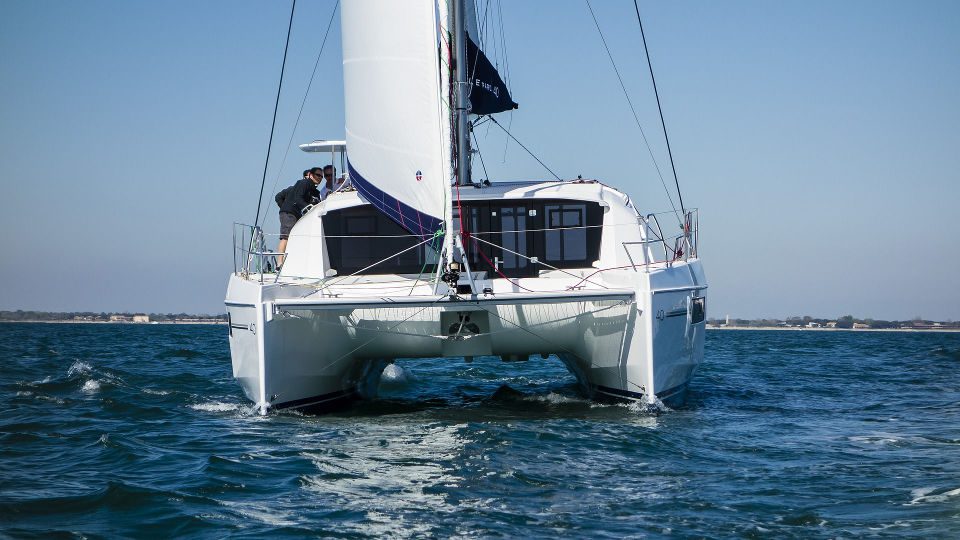
Follow along in this blog as we reveal the pros and cons of catamarans in the Galapagos, especially compared to the notable benefits of opting for a single-hull (otherwise known as a monohull) Expedition Vessel.
Yacht La Pinta is an Expedition Vessel designed to comfort you during a Galapagos vacation.
The Benefits of Catamarans in Galapagos
The catamarans’ design serves a specific function, primarily impacting their speed and stability. By featuring two hulls instead of one, catamarans reduce their water displacement, which means they encounter less resistance from the water as they move.
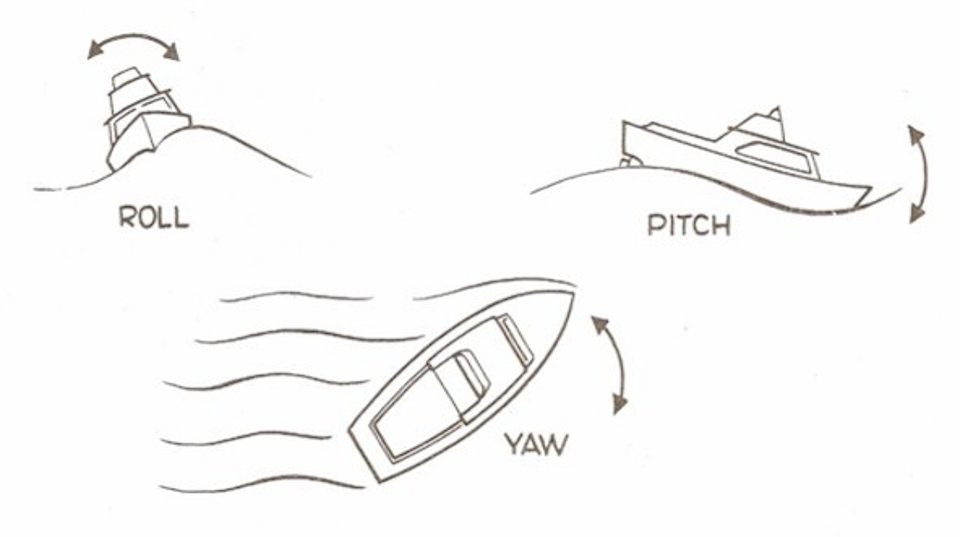
However, the benefits of traversing waters aboard a catamaran are most noticeable when sailing downwind. These conditions allow catamarans to maintain stability and minimize roll as they follow the path of least resistance. If you’re not flowing with the wind (i.e., if you wish to go in any direction other than downwind), you may encounter the first problem associated with traveling on catamarans in the Galapagos, as discussed in the next section.
In recap, catamarans navigate seas more effectively when sailing with the wind and currents. But remember, in the Galapagos, you’re not always sailing downwind. In the Galapagos, you’ll flow in all directions to ensure comprehensive island coverage, as any good cruise should offer its guests.
TALK TO A DESTINATION EXPERT

Diego Zapata

Rosa Mena

Sandy Lara

Diego Zapata

Rosa Mena

Sandy Lara
The Downsides of Travelling Aboard a Catamaran in Galapagos
Problem #1 with Catamarans in Galapagos: Minimal roll, elevated pitch
Even when sailing with the wind on a catamaran, and despite experiencing minimal roll, a significant drawback is the noticeable oscillation in pitch. In simpler terms, catamarans tend to have their front ends continuously rise and fall when moving across water, which can be likened to “slapping the sea.” This movement can lead to a rather uncomfortable ride. Moreover, in rough waters, one hull might lift more than the other, disrupting the smoothness of the ride. In contrast, single-hull Expedition Vessels move harmoniously with the surrounding elements instead of constantly combatting them.
Another factor to consider is that if a wave hits a catamaran from the side, it impacts twice – once on each hull. This can make a catamaran feel like a rollercoaster ride in choppy waters, which isn’t ideal when visiting a unique destination like the Galapagos.
The design also has drawbacks: in some models, passenger cabins are located in the hull (the least stable part), while communal spaces occupy the bridge (the most stable part) of the catamaran.
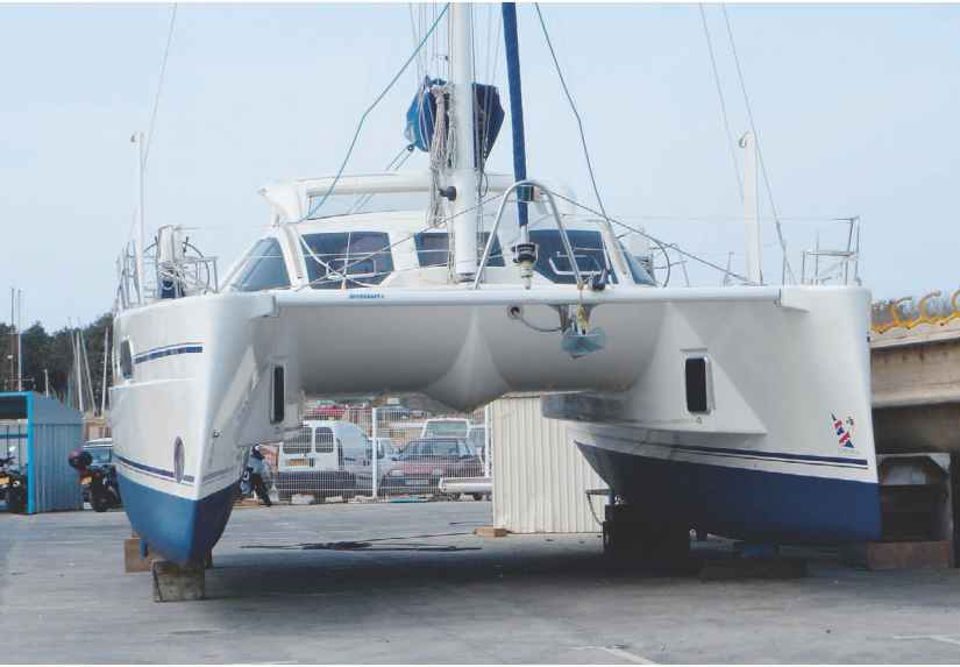
Problem #2 with Catamarans in Galapagos: Size & Zero Wind
Catamarans in the Galapagos tend to be relatively small, with many accommodating a maximum of 16 guests. As a result, it’s not uncommon for passengers to feel somewhat confined aboard these vessels.
However, one crucial aspect to understand about the downside of catamarans in the Galapagos is this: The Galapagos region is often equated with the doldrums, indicating it’s an area with minimal winds, especially from January to April when winds are virtually non-existent. Therefore, catamarans in the Galapagos will not be wind-powered. Given their small size, this raises the question: how close will you be to the engines? It’s important to remember that many vessels navigate at night, meaning engine noise could disrupt your sleep.
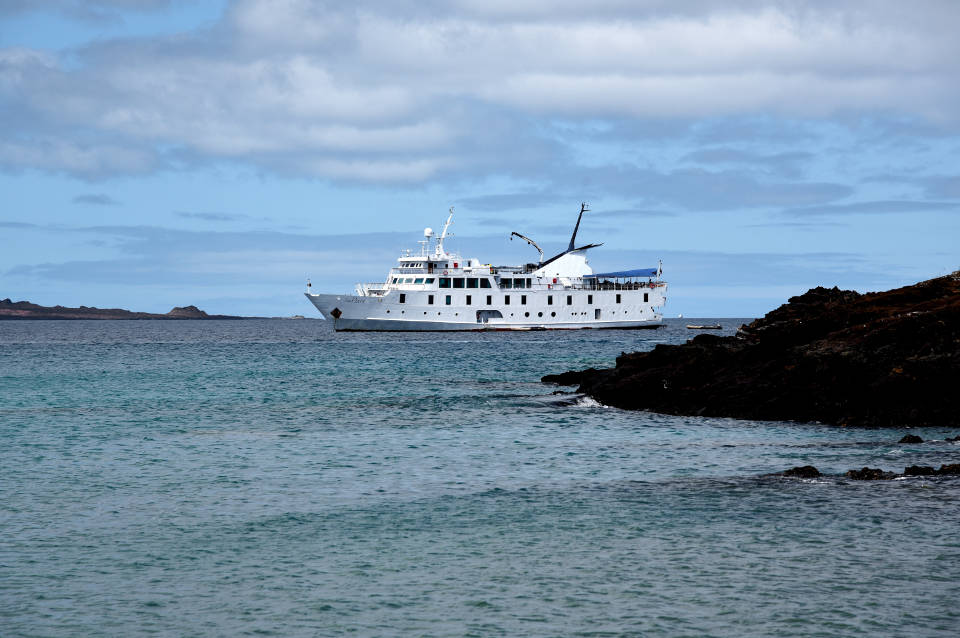
The Benefits of Traveling aboard Our Expedition Vessels
Our expedition vessels in the Galapagos, such as the Yacht La Pinta and Isabela II, are considerably more significant in comparison. These vessels offer ample space for guests to stretch out and relax. Another factor to consider is that, in general, longer boats provide more stability during sea navigation. We also strategically schedule our movements at night and steer clear of swells that cause excessive motion to ensure a smooth and comfortable journey.
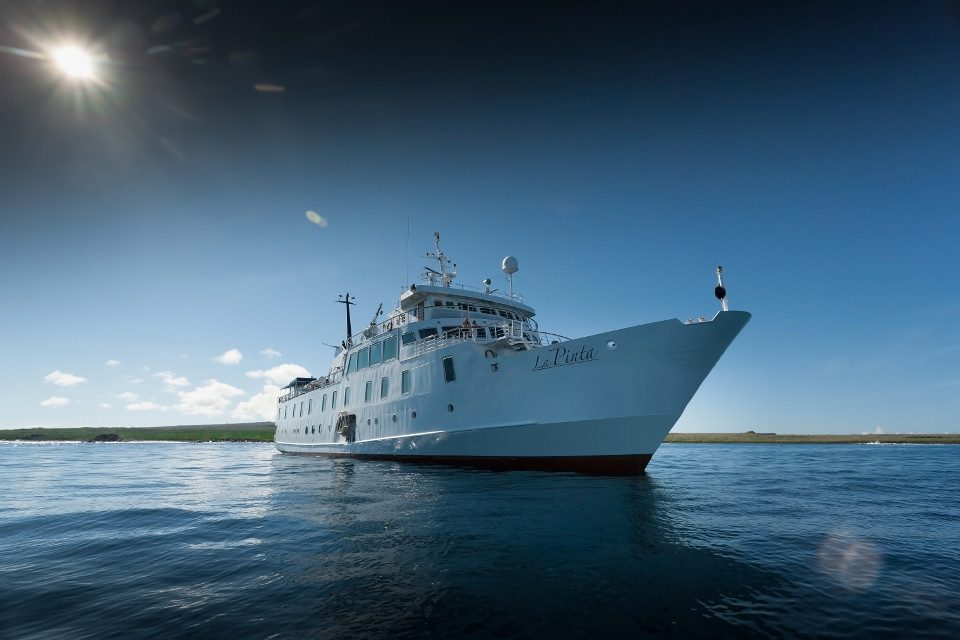
Perhaps most importantly, our vessels feature buffer decks to protect guests from manufactured noises. These buffer decks help ensure that guests are well-protected from the sound of the engines on our ships.
Our single-hull expedition vessels in the Galapagos typically anchor on the leeward side of the islands, providing additional protection from crosswinds.
Another advantage of our medium expedition vessels is the increased number of guides on board. This leads to a lower guest-to-guide ratio, typically around ten guests per guide, significantly lower than the National Park’s maximum guideline of fifteen.
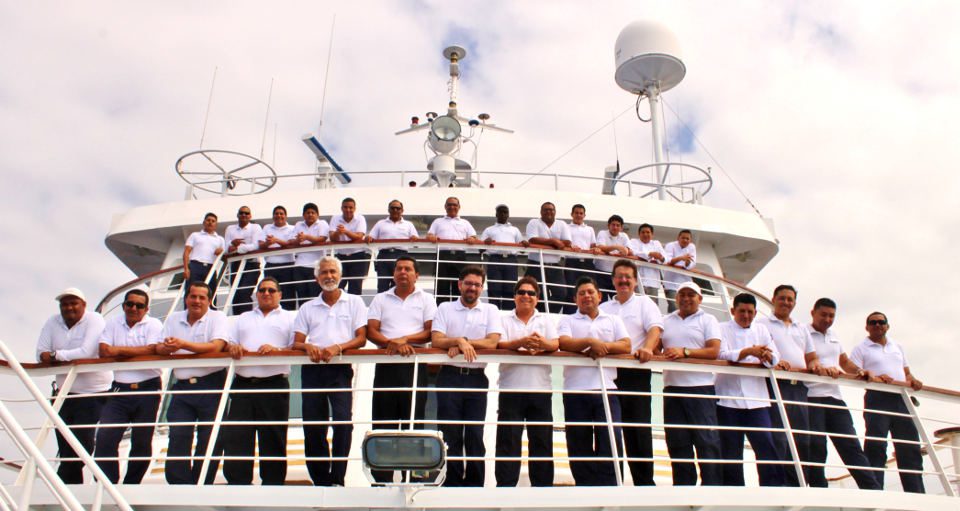
Decisions, decisions…
Indeed, the choice often concerns personal preference and the vessel’s intended use. However, it’s crucial to remember that, given the unique conditions in the Galapagos, there’s no tangible benefit to traveling aboard a catamaran. Unless you’re sailing with the wind and not contending with currents from all directions – essentially not struggling against the ocean to maintain a specific course – a catamaran might be a good fit. But in a destination as unique and special as the Galapagos, where there is practically no wind, and smaller catamarans may result in enduring engine noise throughout the night, opting for such a sleek and sophisticated vessel may not be the most sensible choice. Regarding catamarans in the Galapagos, it is often a case of style over comfort.
We strongly recommend considering a single-hull expedition vessel in the Galapagos, such as the Yacht La Pinta and Yacht Isabela II, for your upcoming vacation. Don’t hesitate to book your Galapagos trip today!

Javier Garcia

Eduardo Silva

Carolina Escobar
START PLANNING YOUR TRIP

Javier Garcia

Eduardo Silva

Carolina Escobar
Get in touch for more
CONTACT US


